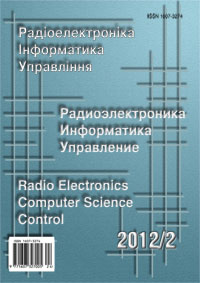OPTIMAL ROBUST WIDE SPEED CONTROL OF INDUCTION МACHINE
DOI:
https://doi.org/10.15588/1607-3274-2012-2-27Keywords:
induction machine, optimal vector control, torque maximization, loss minimization, field-weakening region.Abstract
This paper represents a robust voltage regulation algorithm for an induction machines that enable minimization of the losses and maximization of torque capability. The maximum torque of an induction machine is limited by the current and voltage constraints. Depending on rotor speed, current and voltage limits, the algorithm calculates the coupling coefficient of stator currents k, that determines the optimal stator currents (id, iq) for the maximum torque capability in whole values of the rotor speed (under the rotor base speed and in the field-weakening region). If those limits are not reached, the algorithm calculates optimal stator currents for minimization of losses of an induction machine. The block diagram of robust optimal voltage regulator is represented. The validity of proposed algorithm is demonstrated by simulation.Downloads
Published
How to Cite
Issue
Section
License
Copyright (c) 2014 E.M. Potapenko, A.A. Shiyka

This work is licensed under a Creative Commons Attribution-ShareAlike 4.0 International License.
Creative Commons Licensing Notifications in the Copyright Notices
The journal allows the authors to hold the copyright without restrictions and to retain publishing rights without restrictions.
The journal allows readers to read, download, copy, distribute, print, search, or link to the full texts of its articles.
The journal allows to reuse and remixing of its content, in accordance with a Creative Commons license СС BY -SA.
Authors who publish with this journal agree to the following terms:
-
Authors retain copyright and grant the journal right of first publication with the work simultaneously licensed under a Creative Commons Attribution License CC BY-SA that allows others to share the work with an acknowledgement of the work's authorship and initial publication in this journal.
-
Authors are able to enter into separate, additional contractual arrangements for the non-exclusive distribution of the journal's published version of the work (e.g., post it to an institutional repository or publish it in a book), with an acknowledgement of its initial publication in this journal.
-
Authors are permitted and encouraged to post their work online (e.g., in institutional repositories or on their website) prior to and during the submission process, as it can lead to productive exchanges, as well as earlier and greater citation of published work.






